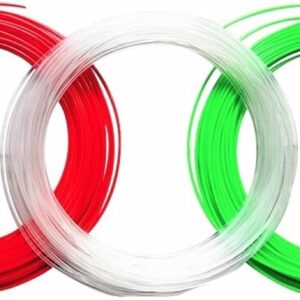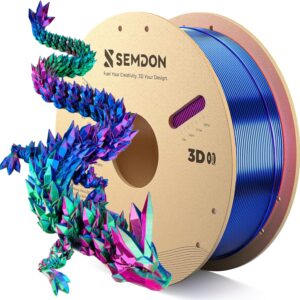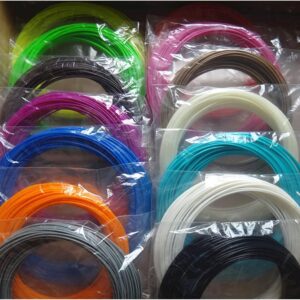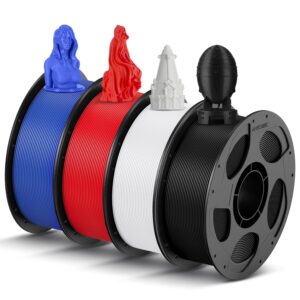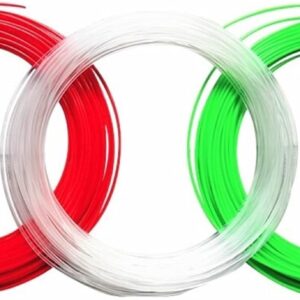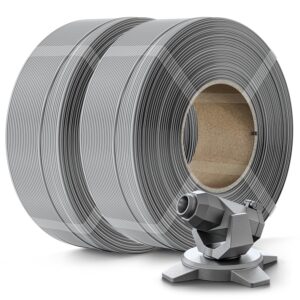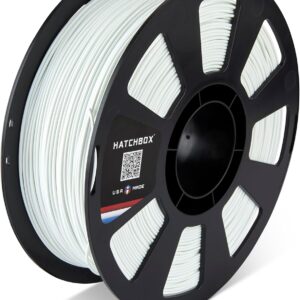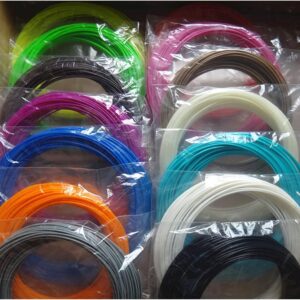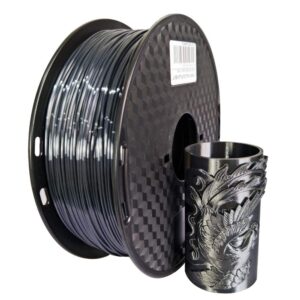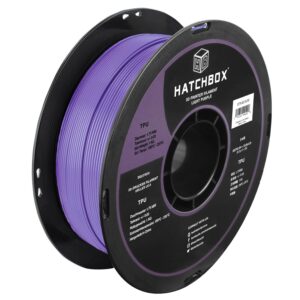Understanding PLA Filament Cost: Unlocking Quality and Savings for Your 3D Printing Projects
3D printing has transformed from a niche hobby into a thriving industry, where individuals and businesses alike harness the technology to create everything from simple prototypes to complex end-use parts. Central to this transformation is PLA (Polylactic Acid) filament—a biodegradable thermoplastic that has emerged as one of the most popular materials for 3D printing. But while many enthusiasts and professionals readily dive into the world of 3D printing, one question often lingers: What exactly drives the cost of PLA filament, and how can understanding these factors lead to significant savings in your projects?
The Basics of PLA Filament
PLA filament, derived from renewable resources such as corn starch or sugarcane, is favored for its ease of use, versatility, and environmental friendliness. However, the cost of PLA filament can vary widely based on several factors including material quality, manufacturer reputation, supplier differences, and market trends. To unlock the potential of your 3D printing projects, it’s essential first to understand these elements.
Quality Over Price: The Filament Dilemma
When it comes to 3D printing, the adage "you get what you pay for" frequently rings true. While it might be tempting to cut costs by choosing lower-priced PLA, doing so can lead to complications such as inconsistent extrusion, clogging, and poor adhesion. High-quality PLA filaments are often designed to produce clean and reliable prints. They typically undergo rigorous testing to ensure consistent diameter tolerances and optimal melting points, which are essential for achieving detail in intricate designs.
Investing in a higher-quality filament can save money in the long run by reducing print failures and wasted material. A well-made spool of PLA can minimize the risk of clogging your printer nozzle or having to redo prints that fail halfway through due to inferior material. This leads to improved satisfaction with the end product as well, providing a significant return on your investment.
Supplier Relationships: The Hidden Cost Factor
The source of your PLA filament also plays a critical role in determining its cost. Established suppliers often have better quality control and reliable customer service, as well as the ability to source raw materials responsibly. Supporting a reputable supplier may come with a higher price tag than lesser-known brands, but it often ensures a reliable product free from defects.
Moreover, many suppliers offer bulk prices for professional users or enthusiasts who purchase larger quantities. By establishing a good relationship with your chosen supplier, you may negotiate discounts or receive updates on exclusive deals and new products.
Seasonal and Market Influences
The filament market, like any other commodity, is subject to fluctuations influenced by global supply chains and changing demand. For instance, during certain seasons or in the wake of significant global events (such as the COVID-19 pandemic), the availability of raw materials can decrease. This disruption leads to increased prices, making it crucial for 3D printing enthusiasts to stay informed about market trends and act accordingly.
Additionally, new technologies and innovations in filament production may lower costs over time. Keeping abreast of advancements in the market—such as eco-friendly materials or filament composites—can help you take advantage of both quality and savings opportunities.
Types of PLA Filament: Specialty vs. Standard
Another factor that can dictate the price is whether you opt for standard PLA or specialty blends. Specialty filaments, such as PLA infused with carbon fiber, glow-in-the-dark additives, or those featuring unique textures, typically come with a higher price tag. While they can add valuable properties to your prints—such as enhanced strength or unique aesthetics—it’s essential to assess whether you genuinely need their benefits for your specific project or if sticking with basic PLA will suffice.
Final Thoughts: Balancing Quality and Cost
Understanding the cost dynamics of PLA filament can feel overwhelming at first, but balancing quality with price is critical for successful 3D printing. Opt for reputable suppliers, choose high-quality materials, and watch for market trends to get the most out of your budget.
Additionally, consider your printing goals. Are you working on prototypes, educational projects, or final products intended for sale? Tailoring your filament choices to meet the specific demands of each project can yield better results and enhance your creative output.
FAQs
1. What is the average cost of PLA filament?
The price typically ranges from $15 to $30 per kilogram. However, specialty filaments or those from premium brands can cost significantly more.
2. Is it worth buying higher-priced PLA filament?
Investing in higher-priced filament often pays off in quality and reliability. It can reduce print failures, saving you time and money in the long run.
3. How do I know if PLA filament is of good quality?
Look for consistent diameter tolerances, positive customer reviews, and certifications from reputable suppliers. Good quality filament should also have clear labeling regarding its composition and melting point.
4. Can I store PLA filament for long periods?
Yes, but it’s essential to store it in a cool, dry place, away from moisture and UV light, which can degrade its properties over time.
5. What should I do if my PLA filament clogs the printer?
First, ensure that your filament is of good quality and correctly loaded. If clogs persist, clean the nozzle, adjust temperature settings, and check for any bends or damage in the filament path.
6. Are there cheaper alternatives to PLA?
While materials like ABS or PETG can be cheaper, they may not offer the same ease of use or print quality as PLA. Each filament type has its own advantages and disadvantages.
Conclusion
In conclusion, understanding the cost implications of PLA filament is key to unlocking both quality and savings for your 3D printing projects. Assessing quality, supplier relationships, and market trends will equip you with the insights needed to make informed choices and maximize your investment in this versatile and vital printing material. By prioritizing quality and value over mere cost, you can truly elevate your 3D printing experience.
